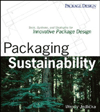EPA Calls for National EPR Framework, More Effective Composting

(Courtesy of EPA)
The U.S. Environmental Protection Agency on Thursday released the “National Strategy to Prevent Plastic Pollution,” outlining opportunities for action to protect communities from the impacts of plastic production and waste and detailing how government agencies, businesses, non-profits, and communities can take additional action to prevent plastic pollution.
Among other recommended measures, the report calls for developing a national Extended Producer Responsibility (EPR) framework.
As reported by Packaging Strategies earlier this year, Dan Felton – formerly Executive Director of AMERIPEN and now President & CEO of the Flexible Packaging Association – said in testimony before Congress in March that the most significant barrier to a successful national packaging EPR program is the lack of national harmonization. You can read about Felton’s testimony here.
Among the EPA report’s recommendations: Develop a national EPR framework.
“EPA recognizes EPR as an example of a policy approach that has been effective at achieving circularity goals, including reduction and reuse goals, in other countries at the national and subnational levels,” the report says. “As more states and communities consider EPR policies for managing a variety of materials, EPA can work with Tribal, territorial, state and local governments; nongovernmental organizations; and other relevant partners to develop a national EPR framework to help increase the efficiency and effectiveness of these policies.”
Another recommendation of the EPA report: Facilitate more effective composting of certified compostable products.
“Certified compostable products can replace plastic products in some cases, making them an important tool in efforts to reduce plastic waste. However, composting programs and infrastructure are not readily available across the United States, and not all composting facilities accept or can effectively process certified compostable products,” the report says. “In addition, more research is needed to ensure that certified compostable plastic products do not adversely impact human health and the environment. Consumers and businesses need to be educated on how to properly source and separate certified compostable products and where they can effectively compost those products.”
More specifically, the report calls for the following steps:
- Improve data and evaluate maps of available composting infrastructure and determine infrastructure needs, including considerations for communities with environmental justice concerns.
- Continue to provide funding to improve composting capacity and infrastructure in the United States.
- Improve tracking of end-of-life management of certified compostable products to help identify gaps in infrastructure, outreach and education.
The entire “National Strategy to Prevent Plastic Pollution” report can be found here.
Looking for a reprint of this article?
From high-res PDFs to custom plaques, order your copy today!









